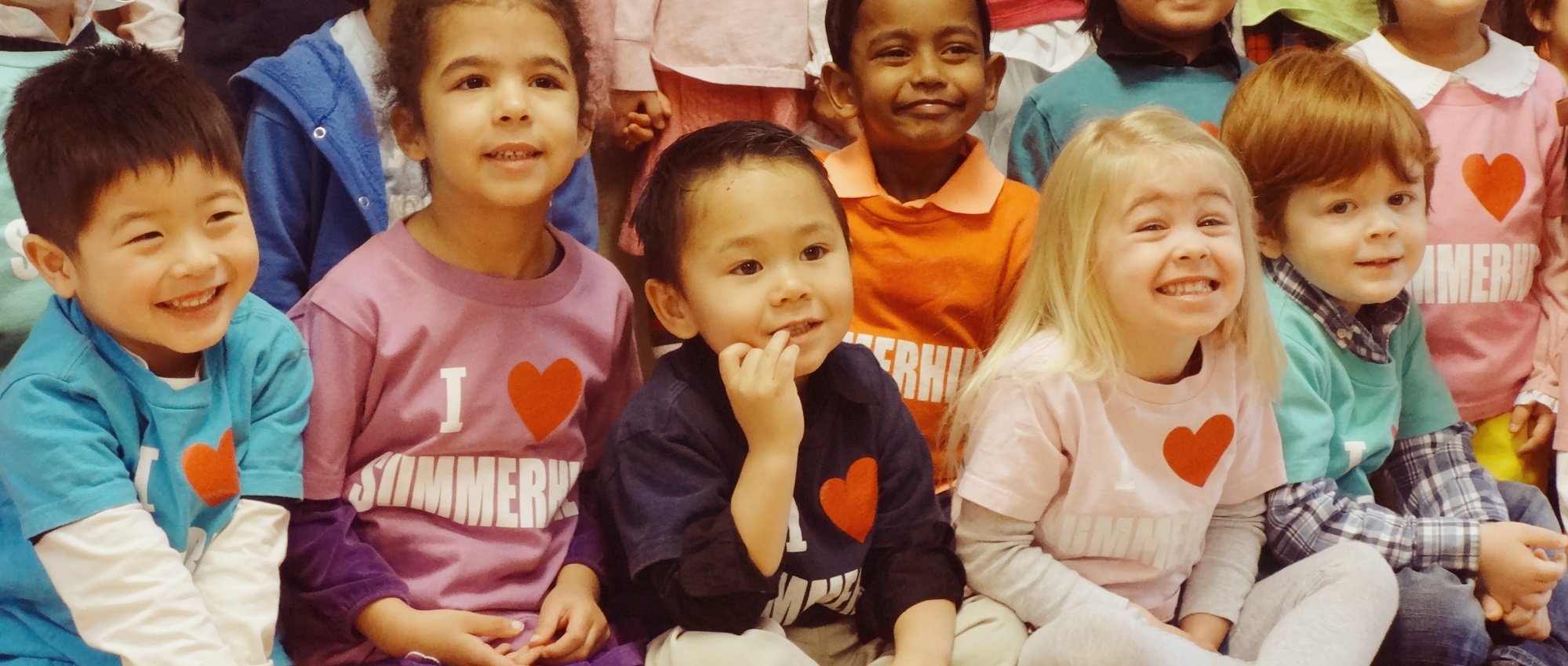
Summerhill International School employs an education program based on the IB Primary Years Program. Here you can see moments from an “exhibition” where children present the results of their work within the program.
Last year, Summerhill International School received accreditation as an IB (International Baccalaureate) school, and introduced the IB Primary Years Program. The IB PYP approach stresses an autonomous learning style where children think, explore for themselves and engage in discussions with one another. Textbooks, as a rule, are not used, and children set their own projects, investigating through exploration and questioning, in order to attain an understanding of the topic.
Children usually begin IB PYP at age 3, but at Summerhill, children aged 1 and 2 also engage in inquiry-based learning. At age 2, they are already capable of the kind of exhibition pictured below.
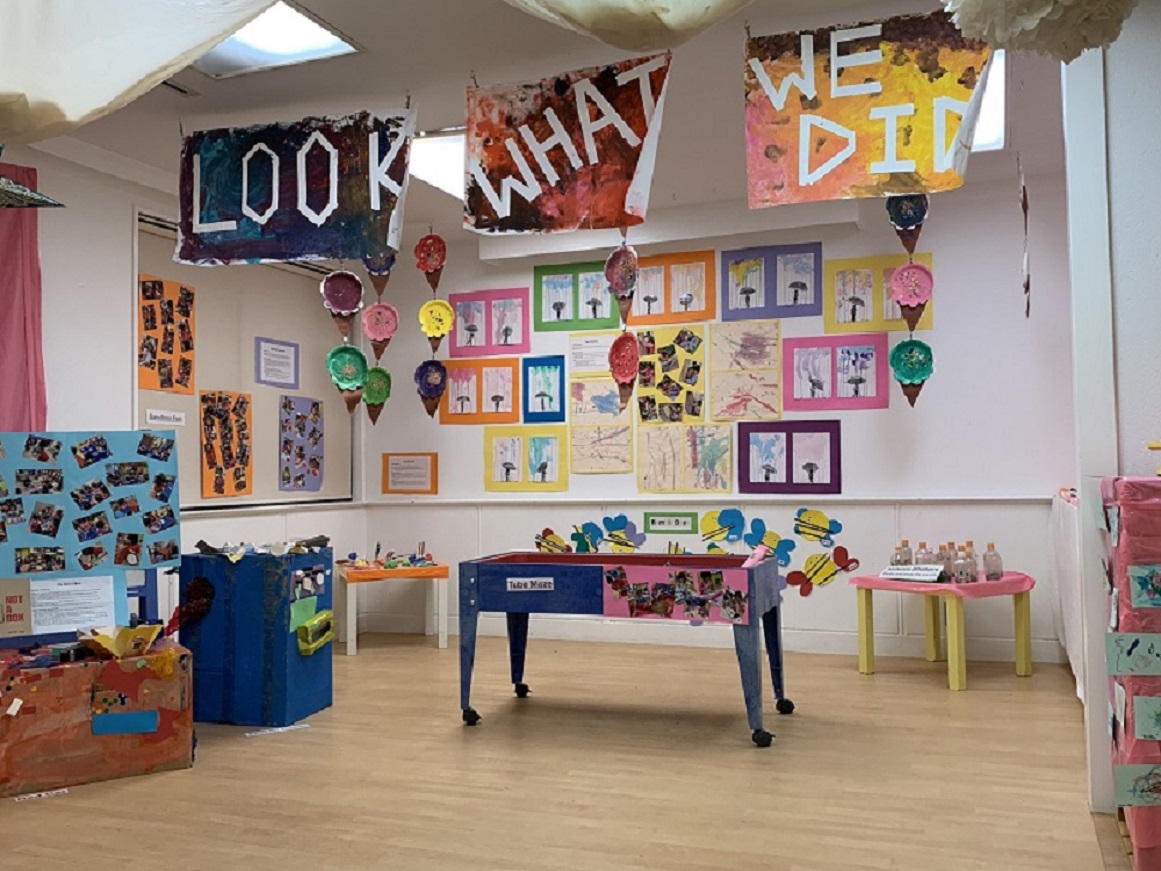
Main exhibition area
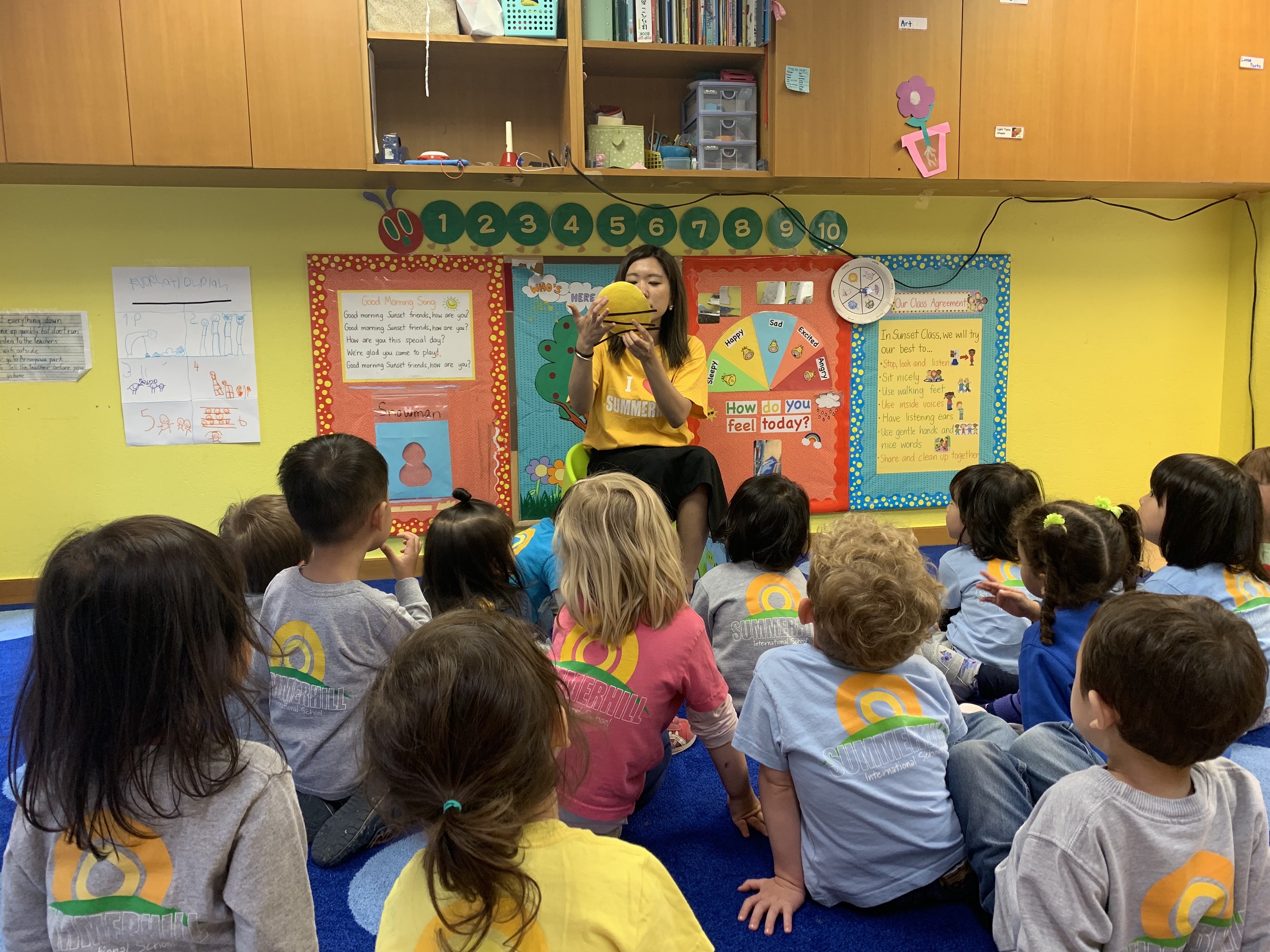
Teacher explaining the exhibition to the children
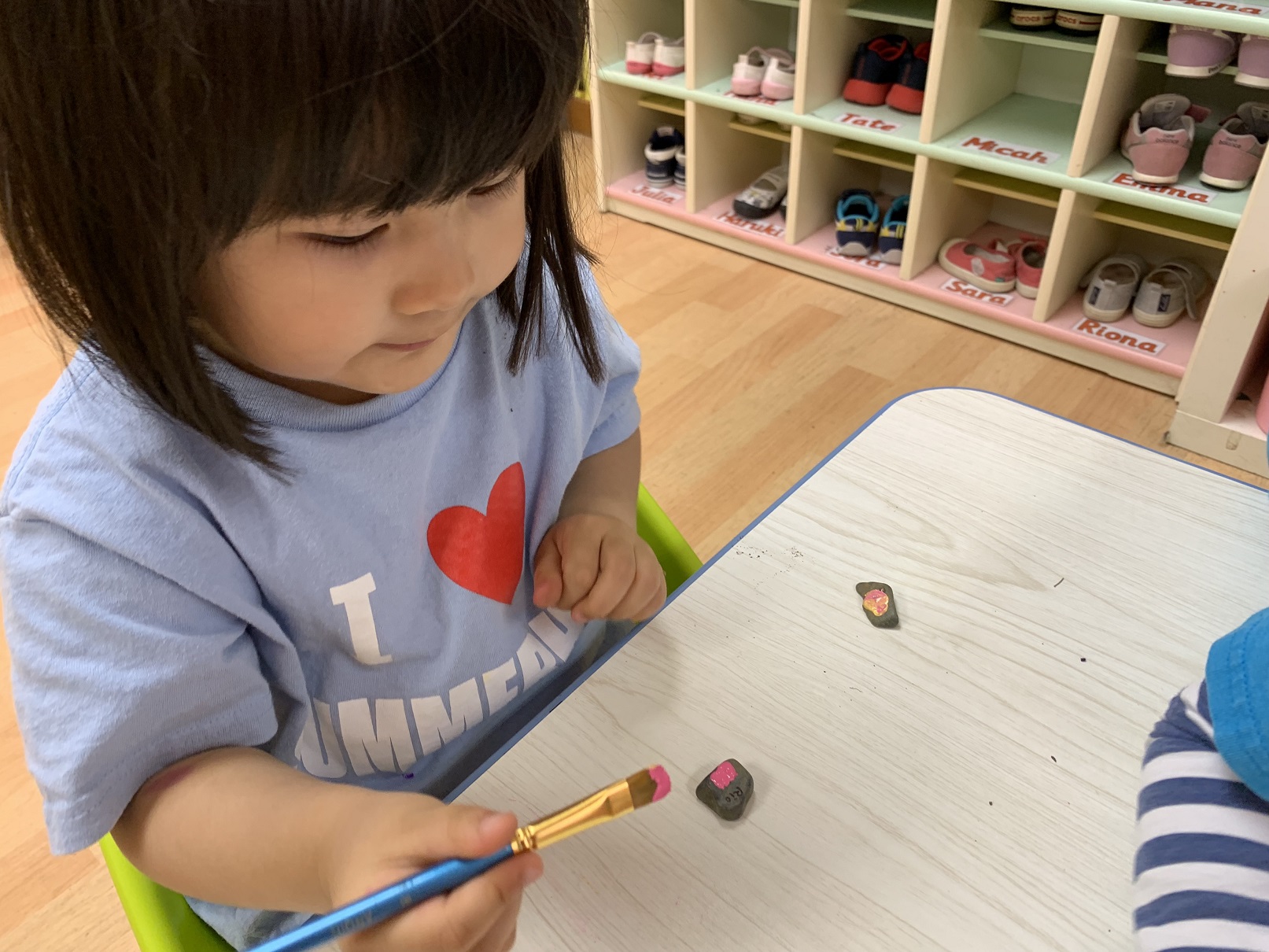
Activity Directions:My Treasure Rock
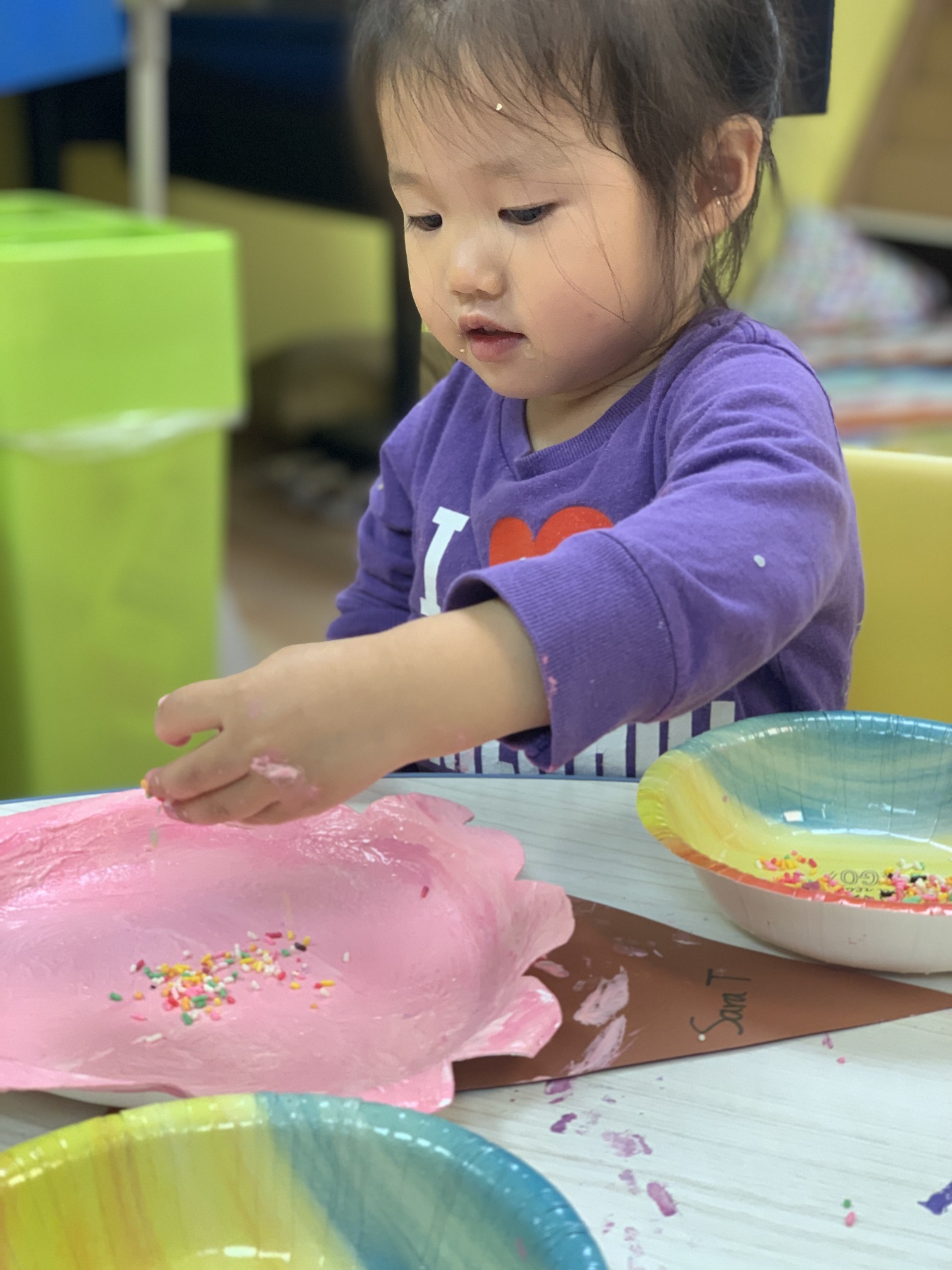
Activity Directions:Ice Cream Sprinkles
The purposes and outcomes of this exhibition are as follows:
In this way, by introducing children to inquiry-based learning from a young age, when they reach the higher grades, they are capable of benefiting more deeply from their education.
Here we take a close look at the exhibition by the 5 year olds’ class. This was the second exhibition to be held by Summerhill since it was accredited as an IB school. Take a look at what the children achieved through their schoolwork.
IB has six themes for learning, and this exhibition was based around one of these – “How We Express Ourselves”. The title of the exhibition was “Let’s Save our Planet”.
The children were split into three groups based on their areas of interest. They thought about what they could do to help the planet, and began to put together a presentation on that subject. They considered what kind of presentation to give, what kind of tools to use for it, and who would talk, and how, preparing for the big day over the course of four months.
On the exhibition day, in front of their parents and friends, they gave their presentations with courage, despite their nerves.
At Reception…
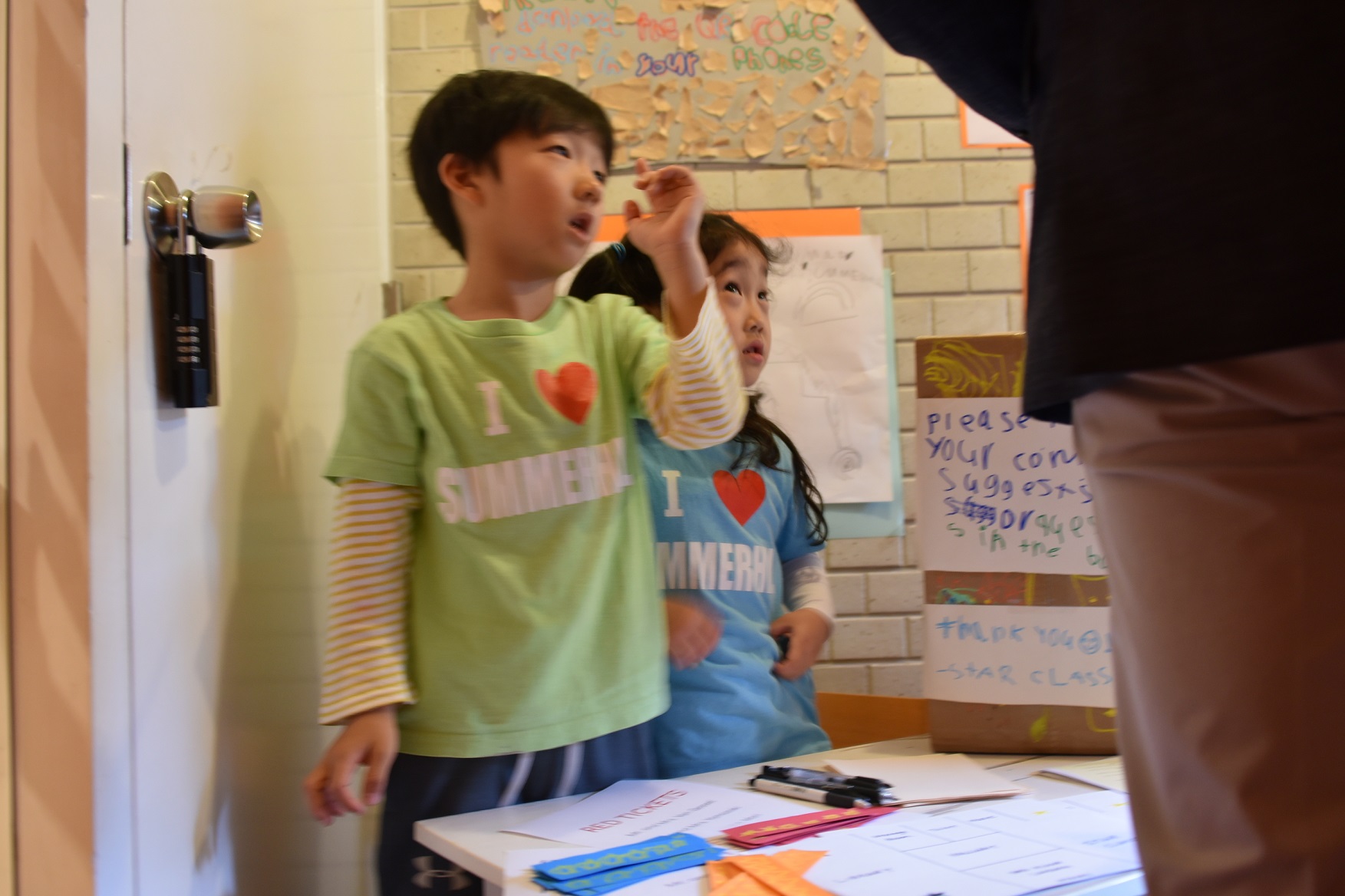
All the children had their own duties, with some on standby in the waiting area to greet visitors. At reception, visitors received a guide map, a program, and a ticket in one of three colors. When a visitor tells the greeters they’re doing a good job, the children’s faces light up with proud smiles. At the entrance, the children’s photographs are displayed with QR codes, which visitors are encouraged to scan. By reading the QR codes, they are able to get a photo of the child smiling brightly.
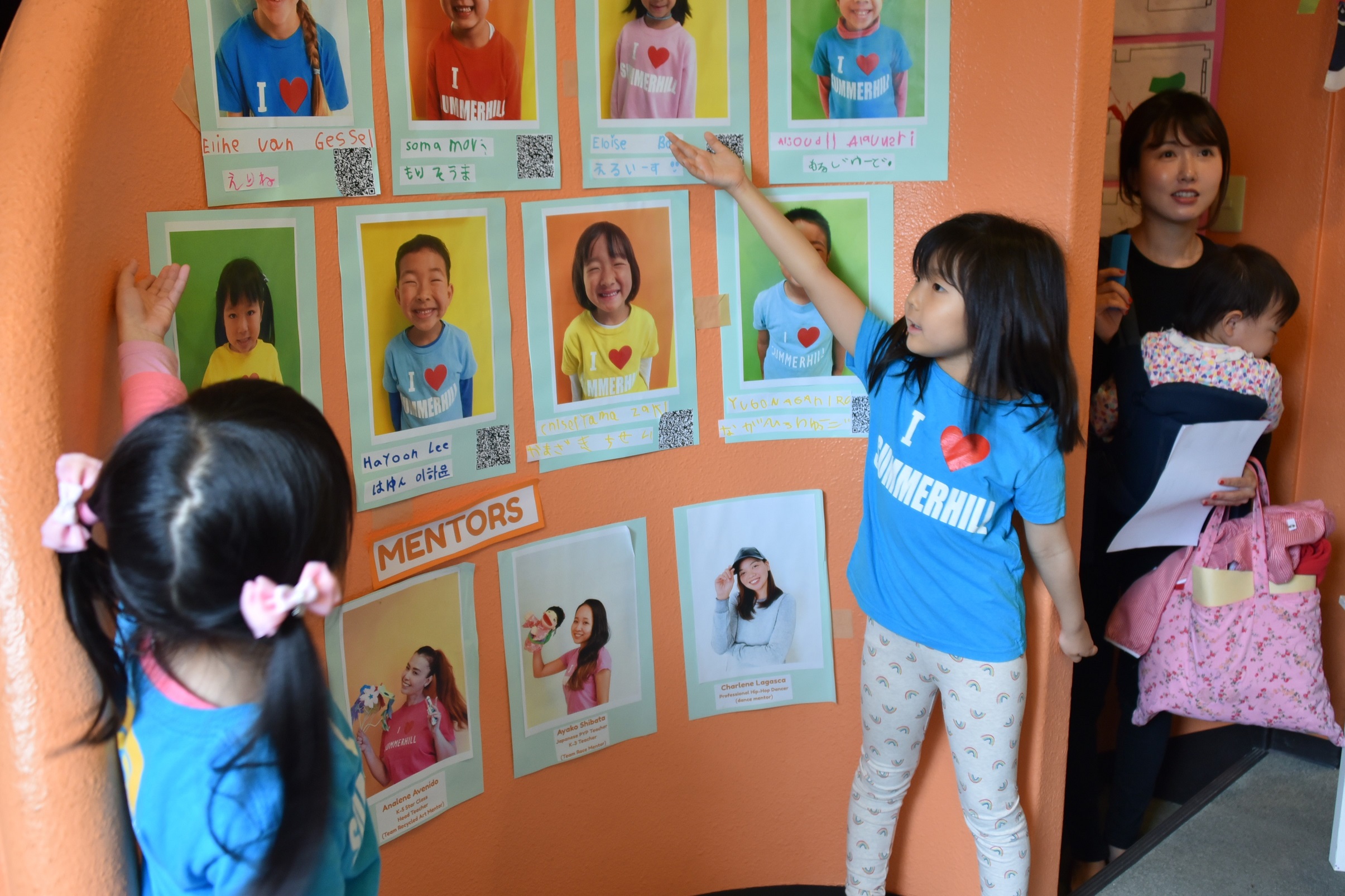
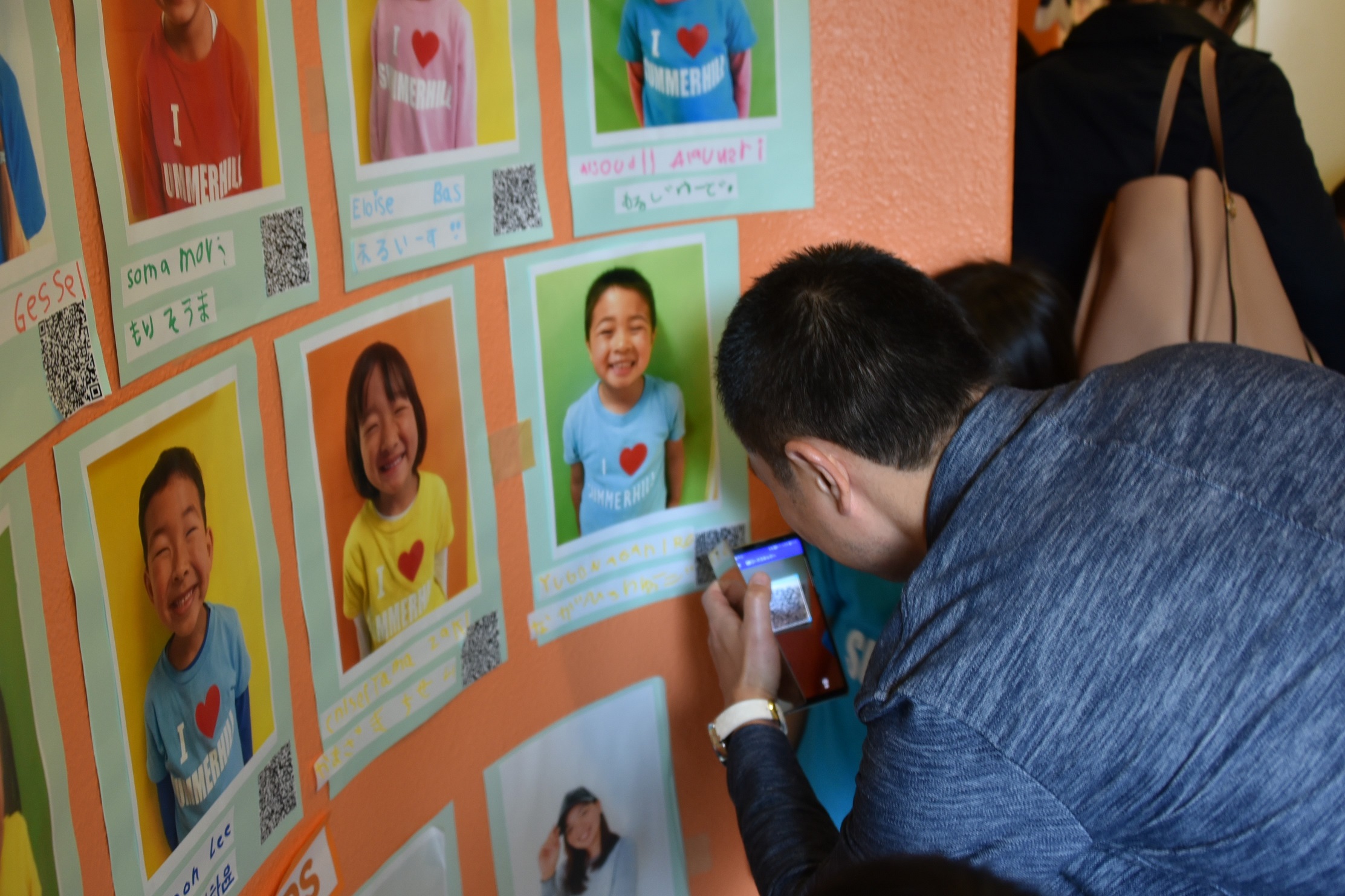
The Exhibition Opens…
After words of welcome from the children, the visitors are called according to the color of their tickets, and make their way to three presentation areas within the school.
Group 1:
The children made a maze to create awareness of how much cardboard is being thrown out.
First off, the children present about the materials posted on the walls.

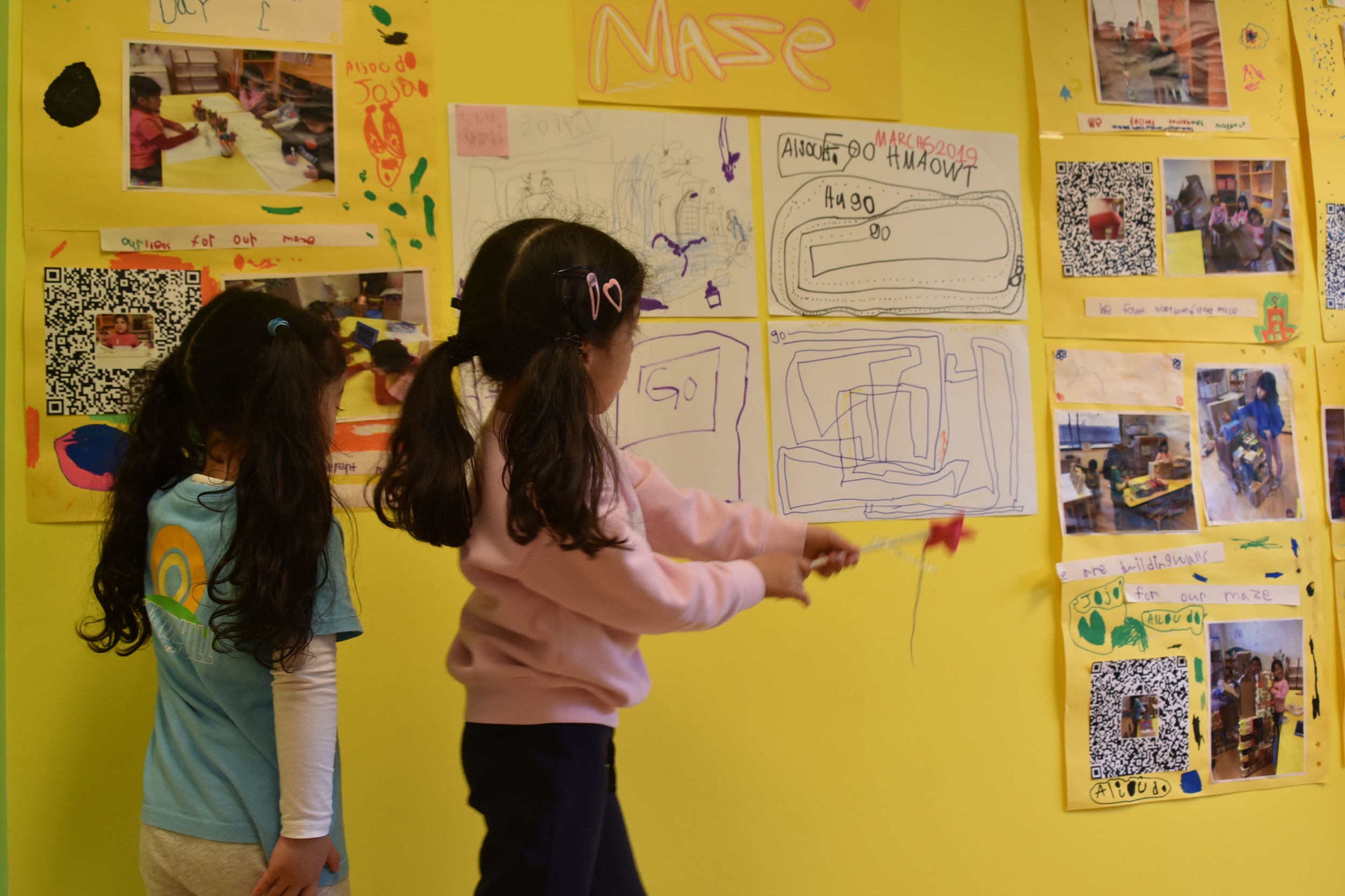
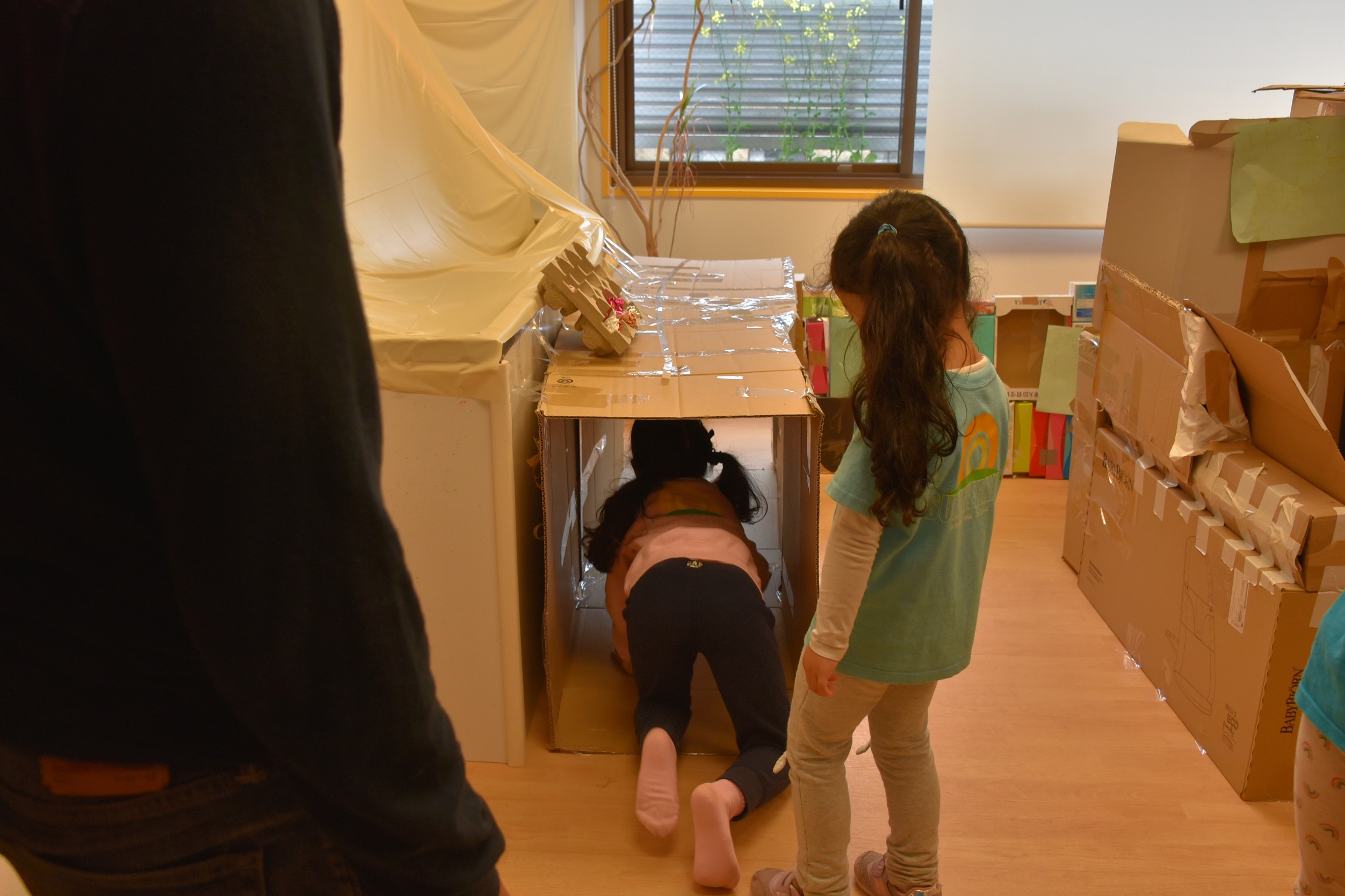
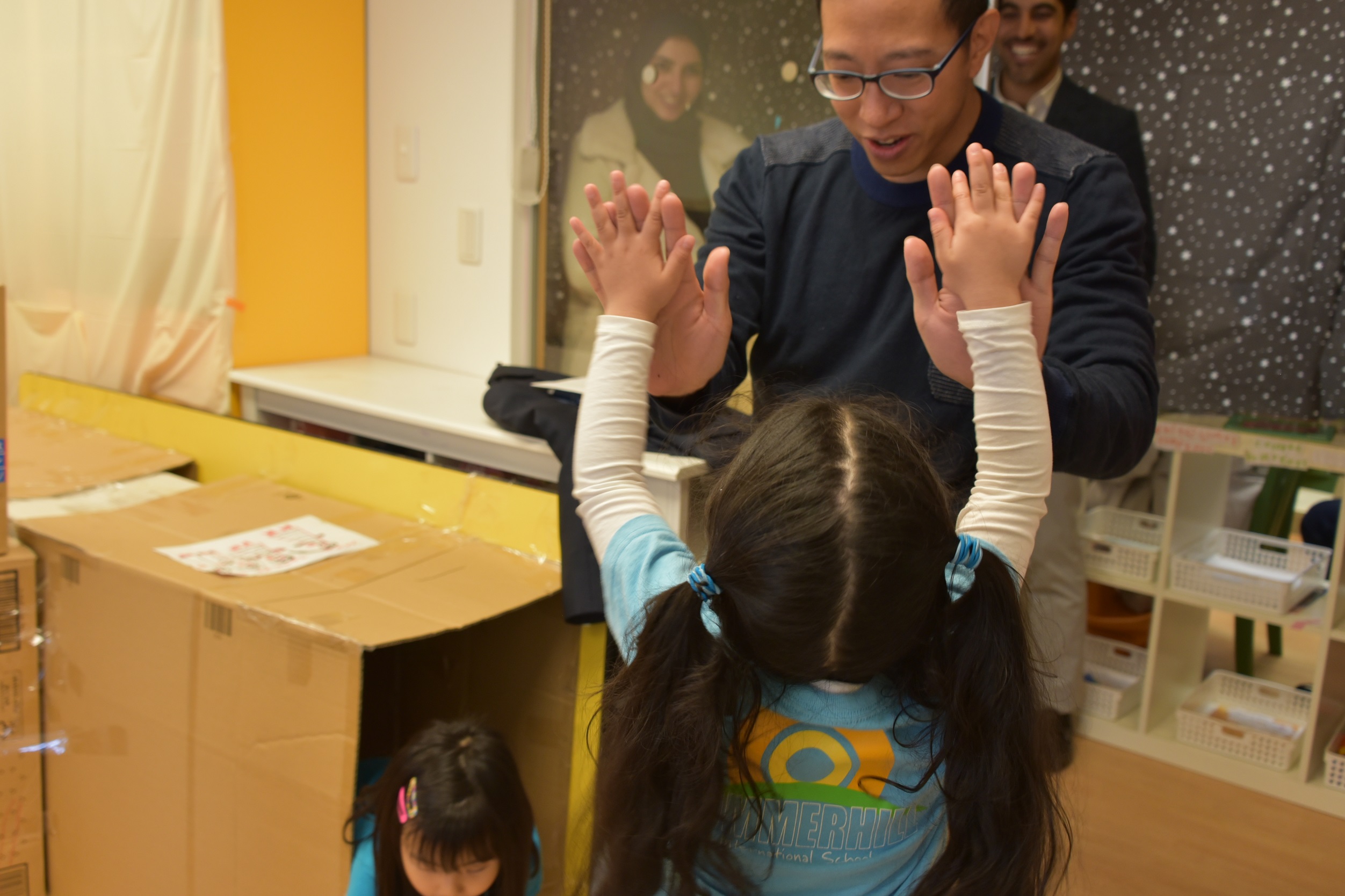
Group 2:
The children created chandeliers from bottles to create awareness of how much plastic bottle waste is being generated.
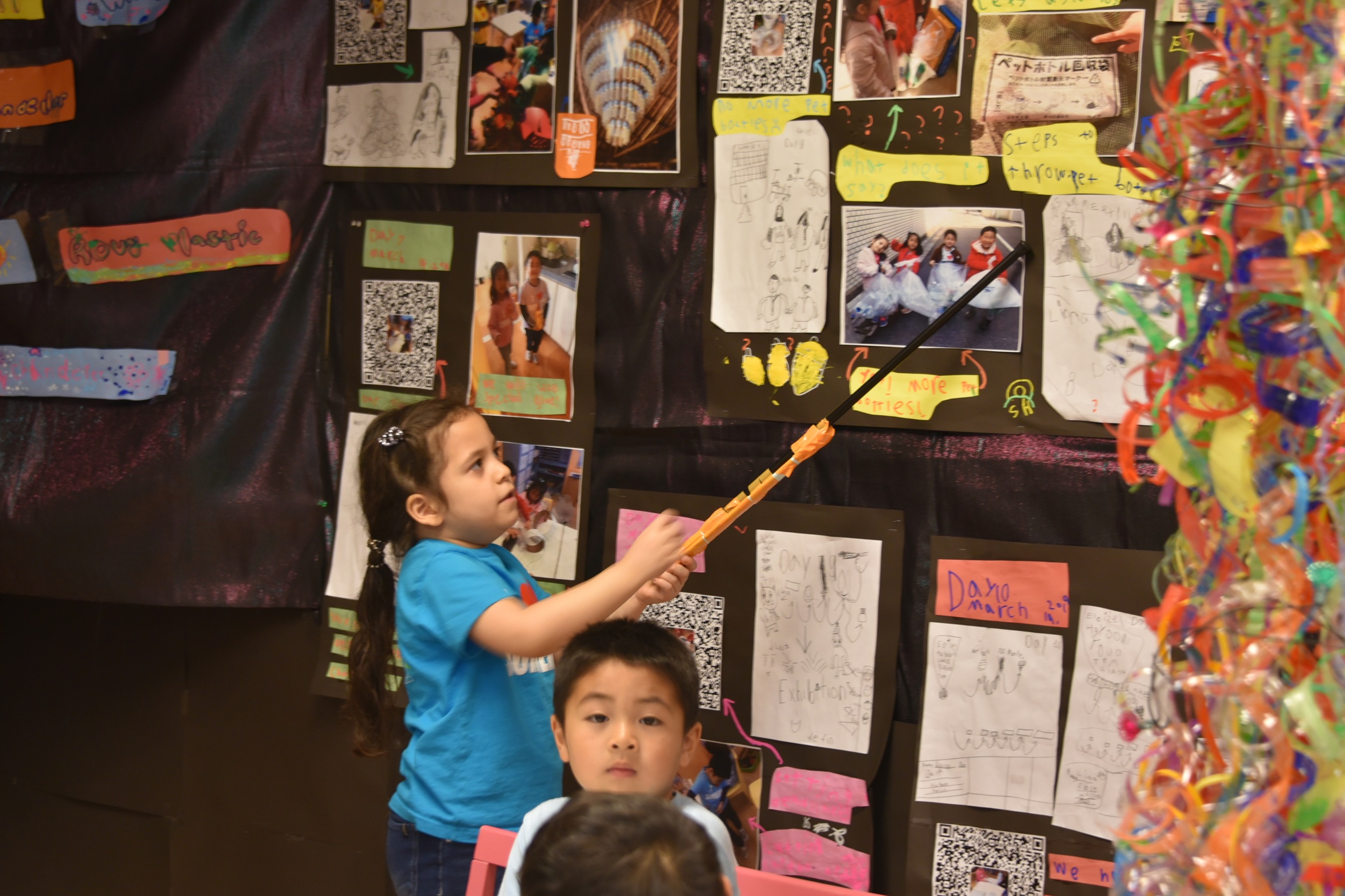
On either side of the children’s table, big, beautiful chandeliers are displayed. On the left is a chandelier made with clear plastic bottles. On the other side is a chandelier made from colored plastic bottles cut and curled into ribbons. The children explain why they made the chandeliers before demonstrating how to make them. Then it is the visitors’ chance to have a go.
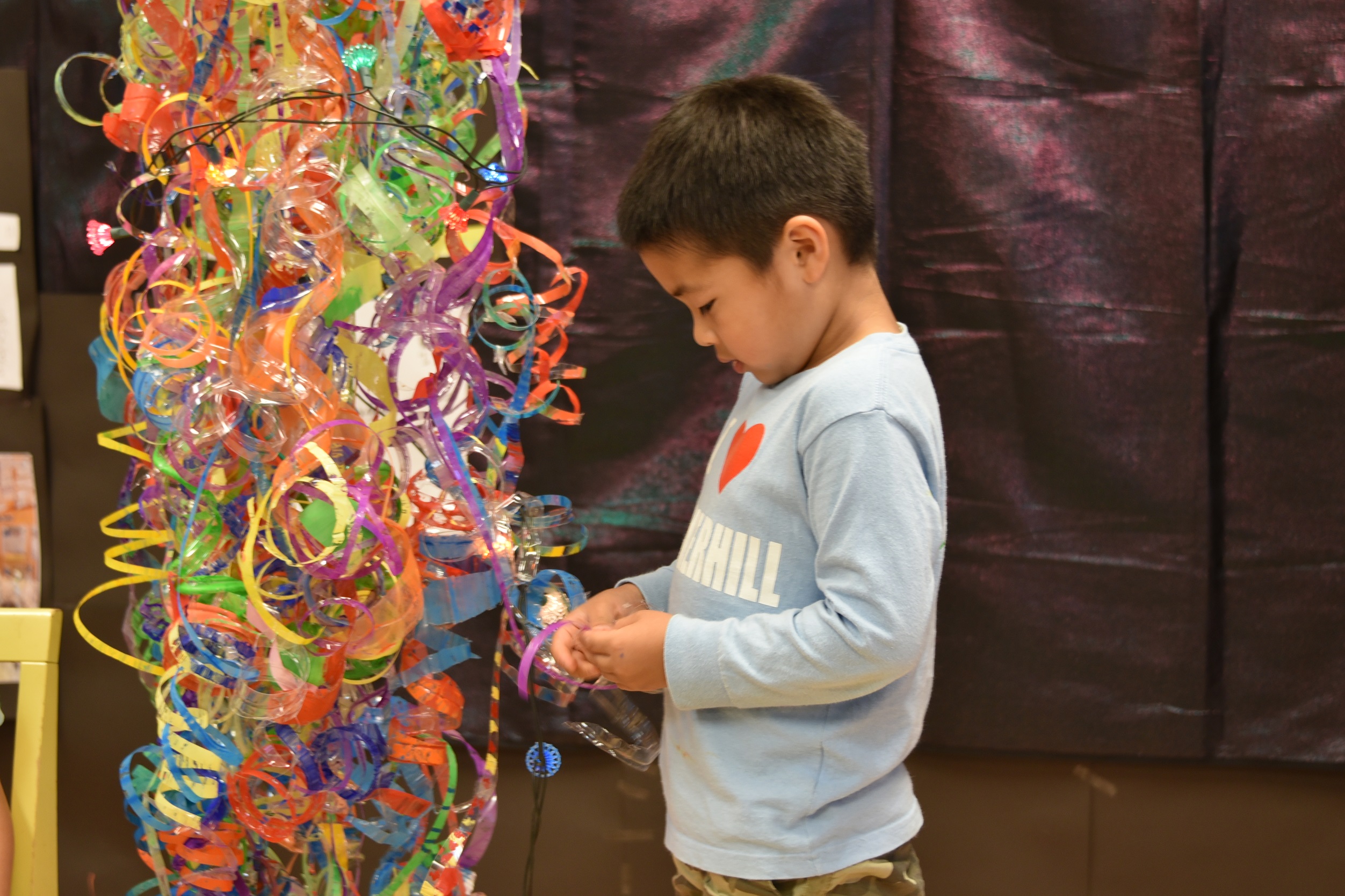

The children created a game and a story to inform the community about how to reduce, reuse and recycle.
Wooden clappers sound the start of a story told through handmade picture cards about garbage separation. After this, the visitors are split into two teams, and have to separate garbage into four categories around colored cones placed on the floor as fast as they can. The children act as referees for the game.
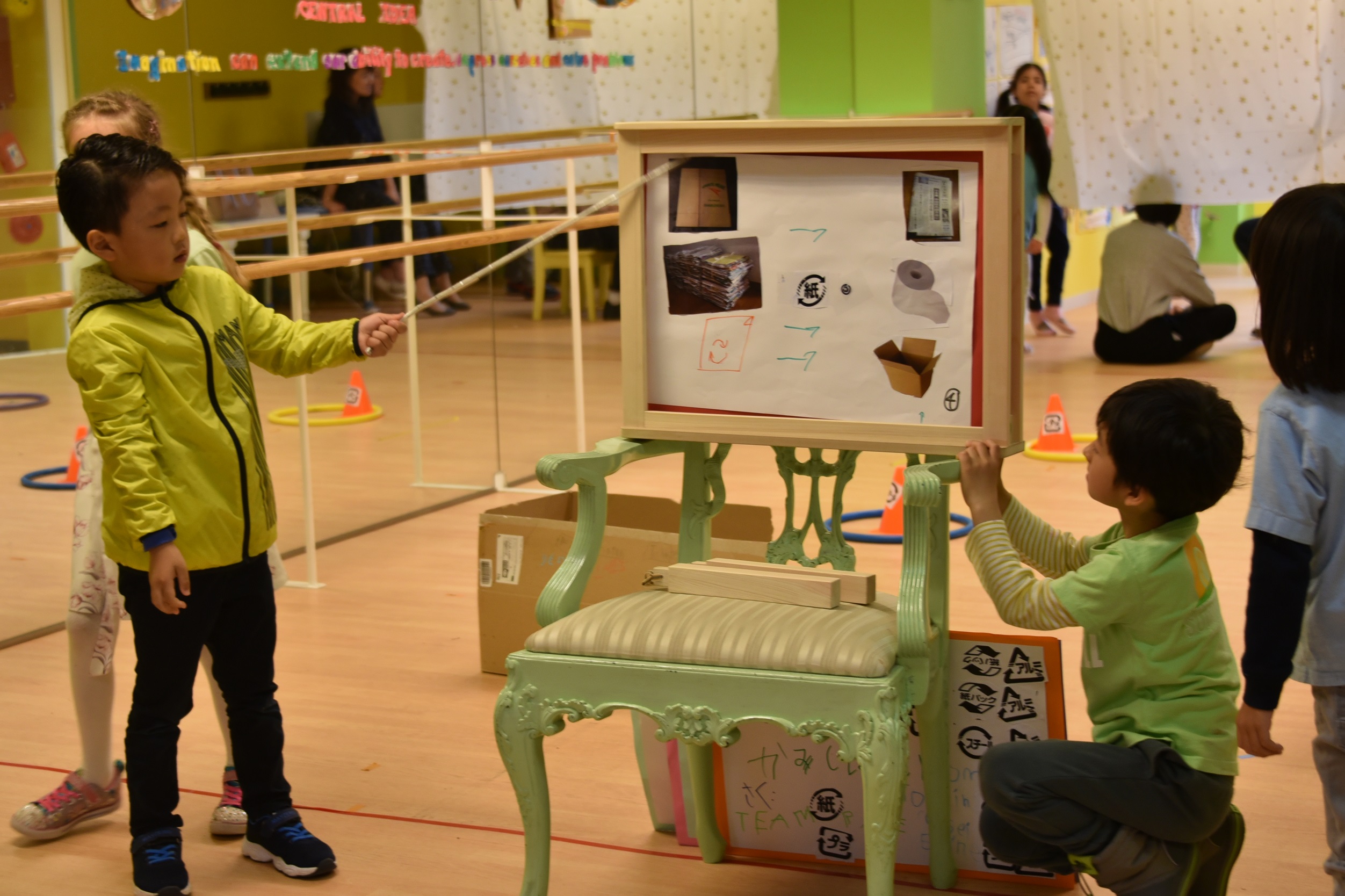
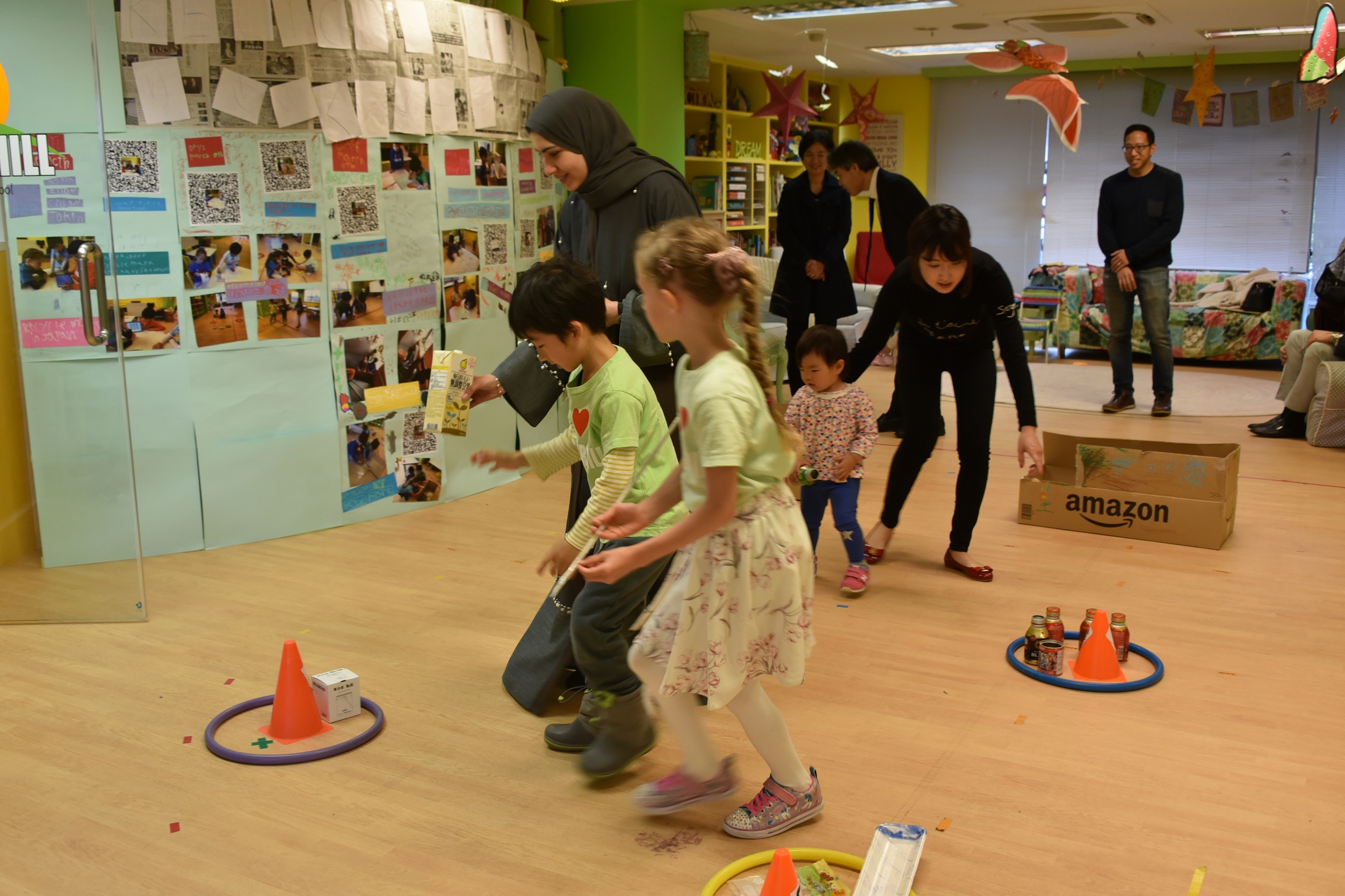
Finally…
The exhibition concludes with a performance of a song and dance by the children about the importance of recycling. The performance meets with a roaring round of applause, and the venue is filled with smiles.
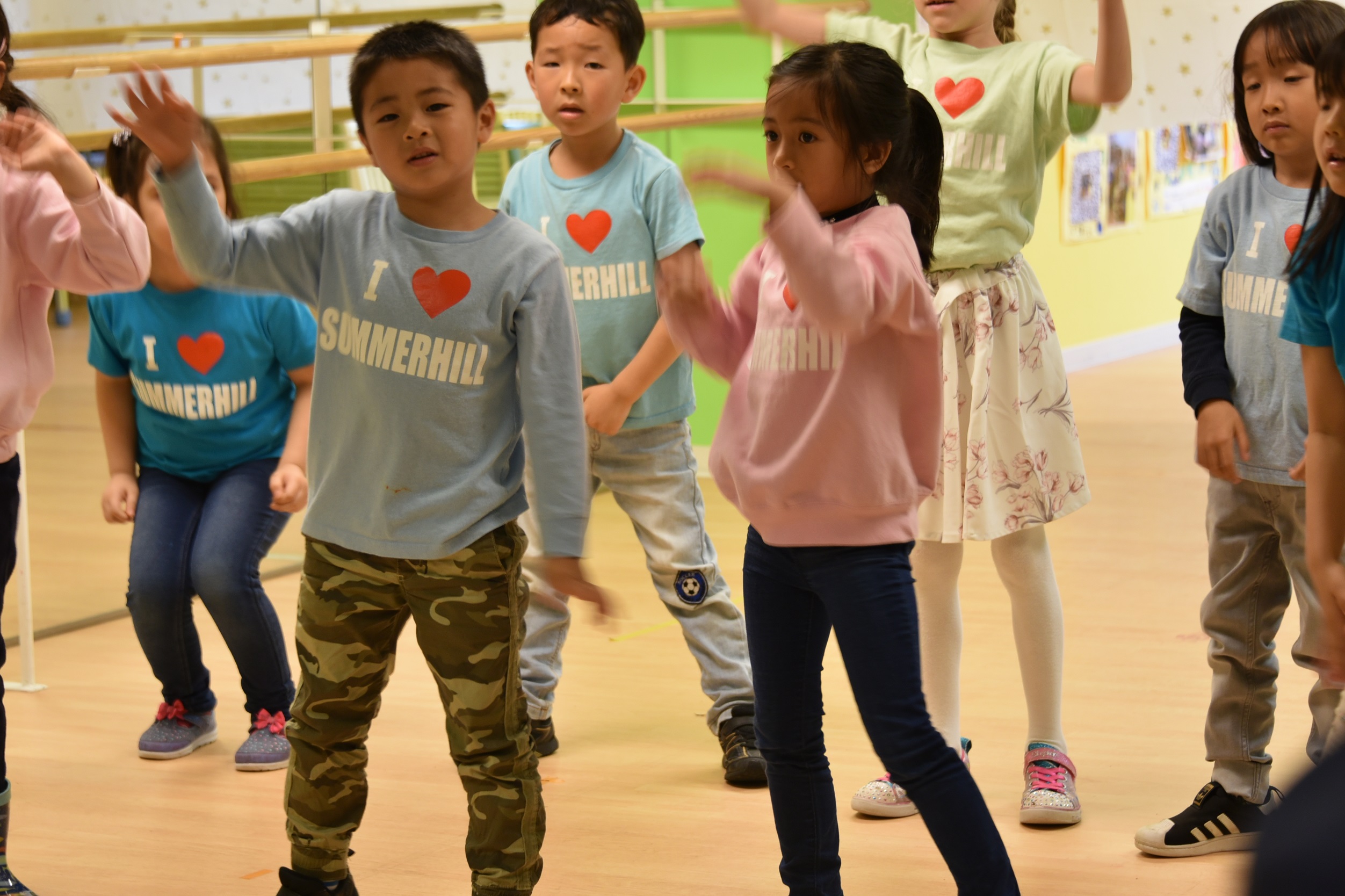
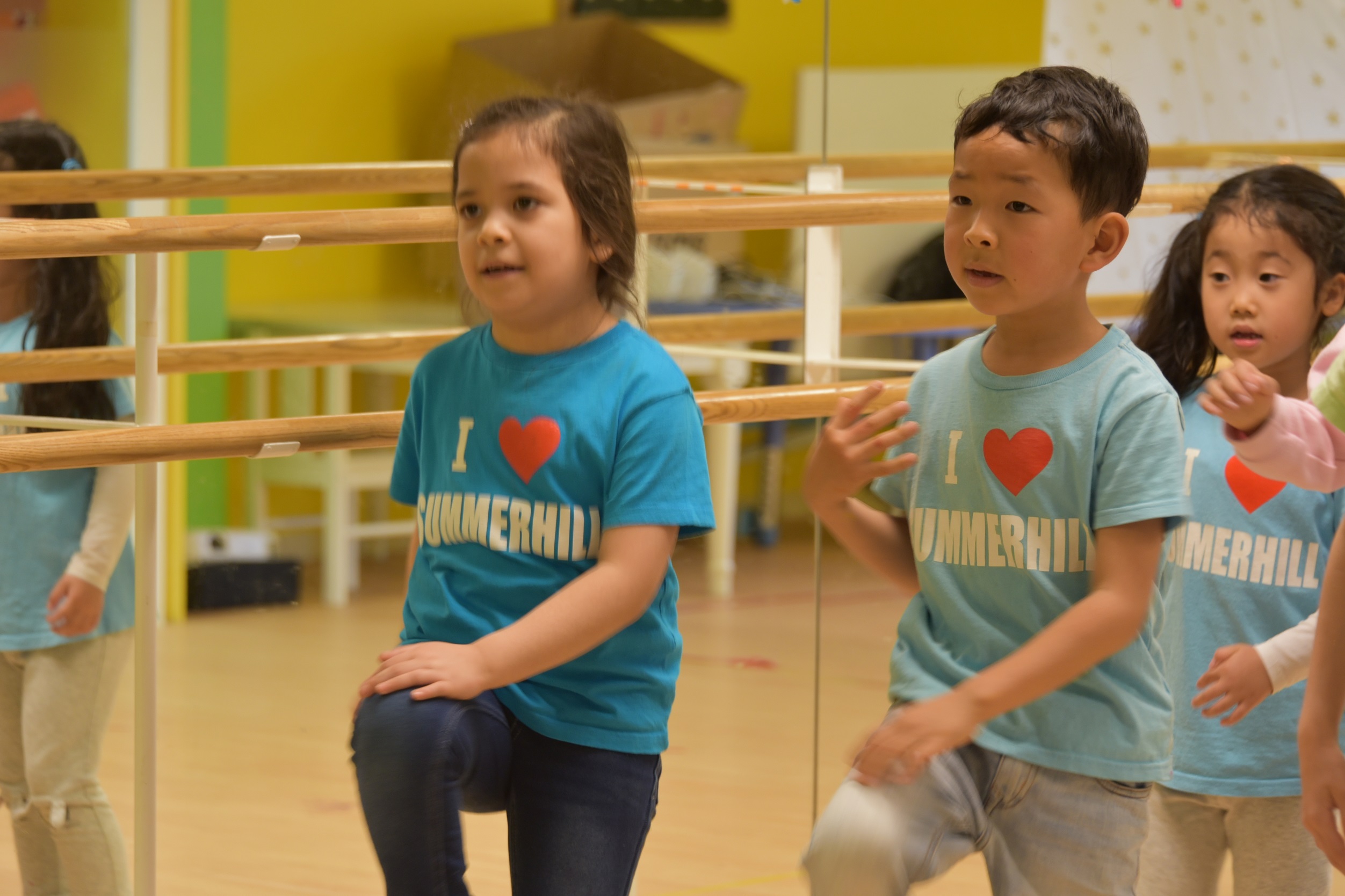
One of the biggest takeaways for the children from the exhibition is that their voices have power and they can make a difference. They also developed an understanding of how ideas and messages can be expressed through different forms.
Summerhill’s method allows children to utilize their ability to think to its fullest potential. If you want to see this for yourself, you can take a tour of the school. Details on registration can be found below.
Summerhill International School
School Tour Registration
Summerhill International School – IB PYP EXHIBITION
| info@summerhill.jp |
| 03-3453-0811 |
| 2-13-8 Moto-Azabu, Minato-ku |
| 9:30 am to 2:30 pm. (Early bird from 9:00 / Extended care from 2:30 to 5:00 pm are available.) |
| Website: Summerhill International School – IB PYP EXHIBITION |
| Website: School Tour Registration |
Summerhill International School – IB PYP EXHIBITION |
